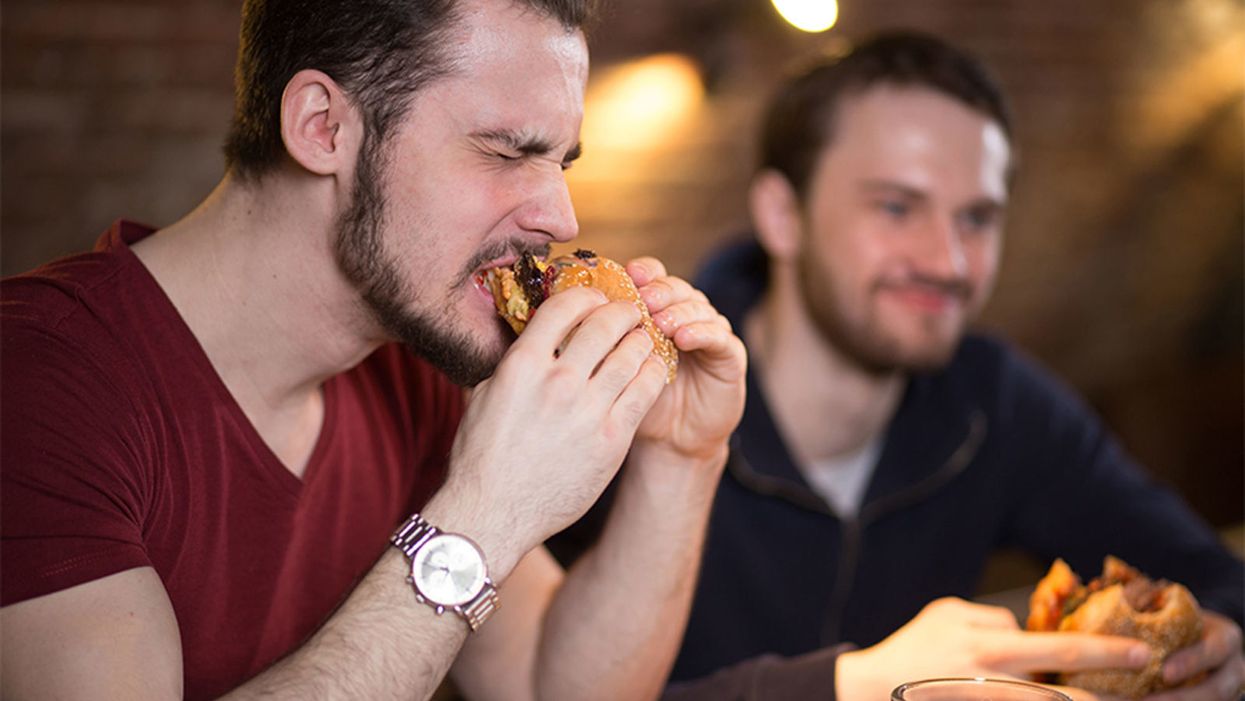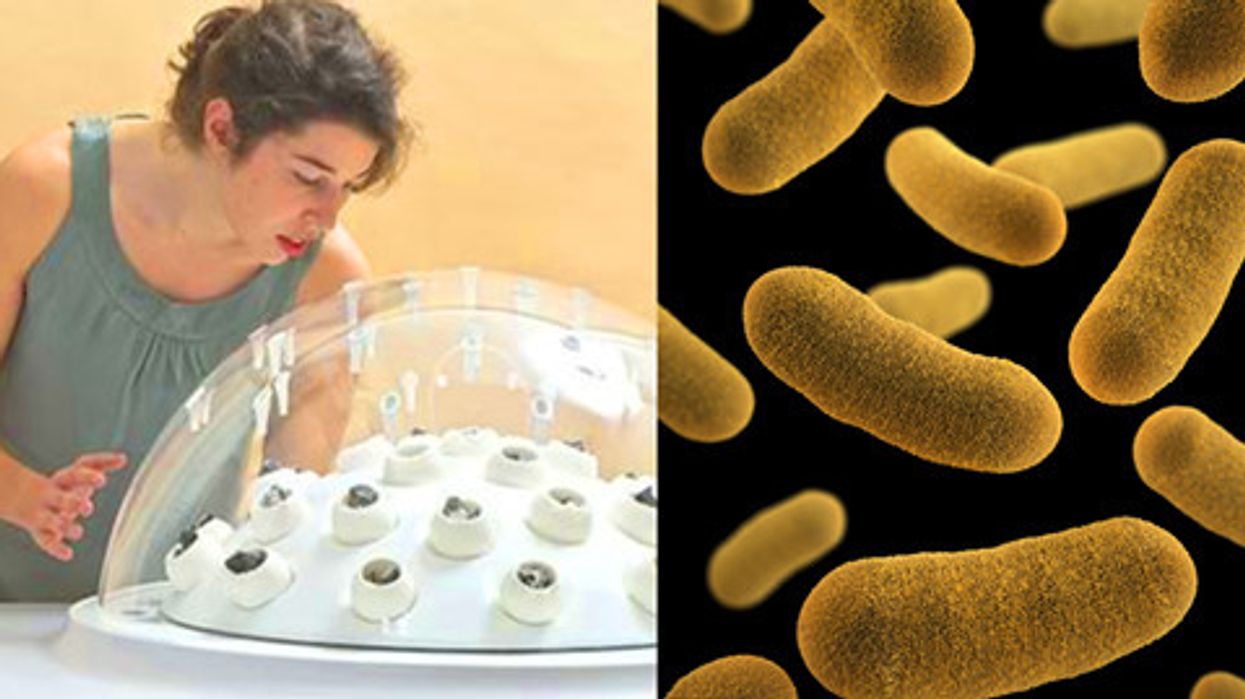Pregnant and Breastfeeding Women Might Have a New Reason to Ditch Artificial Sweeteners
A mom cradles her newborn baby.
Women considering pregnancy might have another reason to drop artificial sweeteners from their diet, if a new study of mice proves to apply to humans as well. It highlights "yet another potential health impact of zero-calorie sweeteners," according to lead author Stephanie Olivier-Van Stichelen.
The discovery was serendipitous, not part of the original study.
It found that commonly used artificial sweeteners consumed by female mice transfer to pups in the womb and later through milk, harming their development. The sweeteners affected the composition of bacteria in the gut of the pups, making them more vulnerable to developing diabetes, and greatly reduced the liver's capacity to neutralize toxins.
The discovery was serendipitous, not part of the original study, says John Hanover, the senior author and a cell biologist at the NIH National Institute of Diabetes and Digestive and Kidney Diseases. The main study looked at how a high sugar diet in the mother turns genes on and off in the developing offspring.
It compared them with mothers fed a low sugar diet, replacing sugar with a mix of sucralose and acesulfame-K (AK), two non-nutrient artificial sugars that are already used extensively in our food products and thought to be safe.
While the artificial sweeteners had little effect on the mothers, the trace amounts that were transferred through the placenta and milk had a profound effect on the pups. Hanover believes the molecules are changing gene expression during a crucial, short period of development.
"Somewhat to our surprise, we saw in the pups a really dramatic change in the microbiome" of those whose mothers were fed the artificial sweeteners, Hanover told leapsmag. "It looked like the neonates were much, much more sensitive than their mothers to the sucralose and AK." The unexpected discovery led them to publish a separate paper.
"The protective microbe Akkermansia was largely missing, and we saw a pretty dramatic shift in the ratio of two bacteria that are normally associated with metabolic disease," a precursor to diabetes, he explains. Akkermansia is a bacteria that feeds on mucus in the gut and helps remodel the tissue to an adult state over the first several months of life in a mouse. A similar process takes several years in humans, as the infant is weaned off of breast milk as the primary food source.
The good news is the body seems to remove these artificial sweeteners fairly quickly, probably within a week.
Another problem the researchers saw in the animals was "a particularly striking change in the metabolism of the detoxification systems" in the liver, says Hanover. A healthy liver is dark red, but a high dose of the artificial sweeteners turned it white, "which is a sign of massive problems."
The study was conducted in mice and Hanover cautions the findings may not apply to humans. "But in general, the microbiome changes that one sees in the rodent model mimics what we see in humans...[and] the genes that are turned on in the mouse and the human are very similar."
Hanover acknowledges the quantity of artificial sweeteners used in the study is on the high end of human consumption, roughly the equivalent of 20 cans of diet soda a day. But the sweeteners are so ubiquitous in consumer products, from foods to lipstick, and often not even mentioned on the label, that it is difficult to measure just how much a person consumes every day.
The good news is the body seems to remove these artificial sweeteners fairly quickly, probably within a week. Until further studies provide a clearer picture, women who want to err on the side of caution can choose to reduce if not eliminate their exposure to artificial sweeteners during pregnancy and breastfeeding.
Lab-grown insect meat could be the protein source of the future.
Agriculture in the 21st century is not as simple as it once was. With a population seven billion strong, a climate in crisis, and sustainability in farming practices on everyone's radar, figuring out how to feed the masses without destroying the Earth is a pressing concern.
Tufts scientists argue that insect cells may be better suited to lab-created meat protein than traditional farm animal cells.
In addition to low-emission cows and drone pollinators, there's a promising new solution on the table. How does "lab-grown insect meat" grab you?
Writing in Frontiers in Sustainable Food Systems, researchers at Tufts University say insects that are fed plants and genetically modified for maximum growth, nutrition, and flavor could be the best, greenest alternative to our current livestock farming practices. This lab-grown protein source could produce high volume, nutritious food without the massive resources required for traditional animal agriculture.
"Due to the environmental, public health, and animal welfare concerns associated with our current livestock system, it is vital to develop more sustainable food production methods," says lead author Natalie Rubio. Could insect meat be the key?
Next Up
New sustainable food production includes what's called "cellular agriculture," an emerging industry and field of study in which meat and dairy are produced via cells in a lab instead of whole animals. So far, scientists have primarily focused on bovine, porcine, and avian cells to create this "cultured meat."
But the Tufts scientists argue that insect cells may be better suited to lab-created meat protein than traditional farm animal cells.
"Compared to cultured mammalian, avian, and other vertebrate cells, insect cell cultures require fewer resources and less energy-intensive environmental control, as they have lower glucose requirements and can thrive in a wider range of temperature, pH, oxygen, and osmolarity conditions," reports Rubio.
"Alterations necessary for large-scale production are also simpler to achieve with insect cells, which are currently used for biomanufacturing of insecticides, drugs, and vaccines," she adds.
They still have some details to hash out, however, including how to make cultured insect meat more like the steak and chicken we're all familiar with.
"Despite this immense potential, cultured insect meat isn't ready for consumption," says Rubio. "Research is ongoing to master two key processes: controlling development of insect cells into muscle and fat, and combining these in 3D cultures with a meat-like texture." They are currently experimenting with mushroom-derived fiber to tackle the latter.
People would still be able to eat meat—it would just come from a different source.
Open Questions
As the report points out, one thing that makes cellular agriculture an attractive alternative to high-density animal farming is that it doesn't require consumers to change their behaviors. People would still be able to eat meat—it would just come from a different source.
But the big question remains: How will lab-grown insect meat taste? Will the buggers really taste as good as burgers?
And, of course, there's the "ew" factor. Meat alternatives have proven to work for some people—Tofurky is still in business, after all—but it may be a hard sell to get the masses to jump on board with eating bugs. Consuming creepy crawlies sounds simply unpalatable to many, and the term "lab-grown, cellular insect meat" doesn't help much. Perhaps an entirely new nomenclature is in order.
Another question is whether or not folks will trust such scientifically-created food. People already use the term "frankenfood" to refer to genetic modification -- even though the vast majority of the corn and soybeans planted in the U.S. today are genetically engineered, and other major crops with GM varieties include potatoes, apples, squash, and papayas. Still, combining GM technology with eating insects may be a hard sell.
However, we're all going to have to get used to trying new things if we want to leave a habitable home for our children. If a lab-grown bug burger can save the planet, maybe it's worth a shot.
On left, the fungus (the whitish, fluffy material) of the Fungi Mutarium growing within the agar cups and degrading the plastic (the black/gray material in the center).
Between the ever-growing Great Pacific Garbage Patch, the news that over 90% of plastic isn't recycled, and the likely state of your personal trash can, it's clear that the world has a plastic problem.
Scientists around the world have continued to discover different types of fungus that can degrade specific types of plastic.
We now have 150 million tons of plastic in our oceans, according to estimates; by 2050, there could be more plastic than fish. And every new batch of trash compounds the issue: Plastic is notorious for its longevity and resistance to natural degradation.
The Lowdown
Enter the humble mushroom. In 2011, Yale students made headlines with the discovery of a fungus in Ecuador, Pestalotiopsis microspora, that has the ability to digest and break down polyurethane plastic, even in an air-free (anaerobic) environment—which might even make it effective at the bottom of landfills. Although the professor who led the research trip cautioned for moderate expectations, there's an undeniable appeal to the idea of a speedier, cleaner, side effect-free, and natural method of disposing of plastic.
A few years later, this particular application for fungus got a jolt of publicity from designer Katharina Unger, of LIVIN Studio, when she collaborated with the microbiology faculty at Utrecht University to create a project called the Fungi Mutarium. They used the mycelium—which is the threadlike, vegetative part of a mushroom—of two very common types of edible mushrooms, Pleurotus ostreatus (Oyster mushrooms) and Schizophyllum commune (Split gill mushrooms). Over the course of a few months, the fungi fully degraded small pieces of plastic while growing around pods of edible agar. The result? In place of plastic, a small mycelium snack.
Other researchers have continued to tackle the subject. In 2017, scientist Sehroon Khan and his research team at the World Agroforestry Centre in Kunming, China discovered another biodegrading fungus in a landfill in Islamabad, Pakistan: Aspergillus tubingensis, which turns out to be capable of colonizing polyester polyurethane (PU) and breaking it down it into smaller pieces within the span of two months. (PU often shows up in the form of packing foam—the kind of thing you might find cushioning a microwave or a new TV.)
Next Up
Utrecht University has continued its research, and scientists around the world have continued to discover different types of fungus that can degrade different, specific types of plastic. Khan and his team alone have discovered around 50 more species since 2017. They are currently working on finding the optimal conditions of temperature and environment for each strain of fungus to do its work.
Their biggest problem is perhaps the most common obstacle in innovative scientific research: Cash. "We are developing these things for large-scale," Khan says. "But [it] needs a lot of funding to get to the real application of plastic waste." They plan to apply for a patent soon and to publish three new articles about their most recent research, which might help boost interest and secure more grants.
Is there a way to get the fungi to work faster and to process bigger batches?
Khan's team is working on the breakdown process at this point, but researchers who want to continue in Unger's model of an edible end product also need to figure out how to efficiently and properly prepare the plastic input. "The fungi is sensitive to infection from bacteria," Unger says—which could turn it into a destructive mold. "This is a challenge for industrialization—[the] sterilization of the materials, and making the fungi resistant, strong, and faster-growing, to allow for a commercial process."
Open Questions
Whether it's Khan's polyurethane-chomping fungus or the edible agar pods from the Fungi Mutarium, the biggest question is still about scale. Both projects took several months to fully degrade a small amount of plastic. That's much shorter than plastic's normal lifespan, but still won't be enough to keep up with the global production of plastic. Is there a way to get the fungi to work faster and to process bigger batches?
We'd also need to figure out where these plastic recyclers would live. Could individuals keep a small compost-like heap, feeding in their own plastic and harvesting the mushrooms? Or could this be a replacement for local recycling centers?
There are still only these few small experiments for reference. But taken together, they suggest a fascinating future for waste disposal: An army of mycelium chewing quietly and methodically through our plastic bags and foam coffee cups—and potentially even creating a new food source along the way. We could have our trash and eat it, too.


